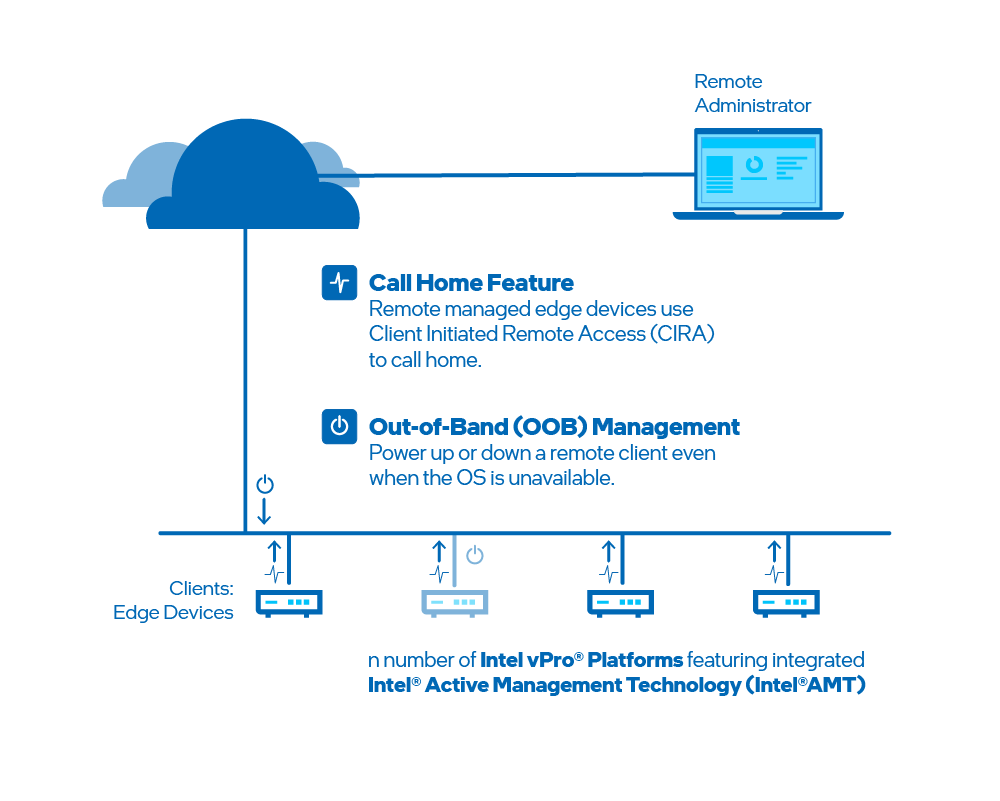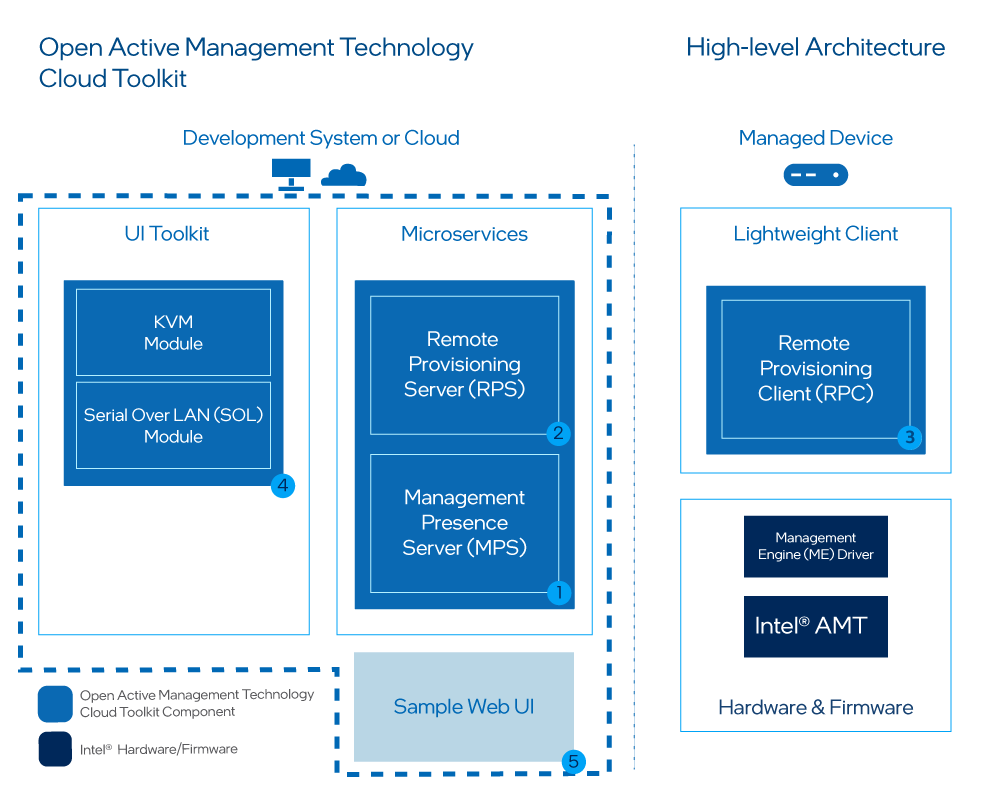Overview¶
Open Active Management Technology Cloud Toolkit (Open AMT Cloud Toolkit) provides open-source, modular microservices and libraries for integration of Intel® Active Management Technology (Intel® AMT). As an open source implementation, the toolkit makes it easier for IT departments and independent software vendors (ISVs) to adopt, integrate, and customize Out-of-band Management (OOB Management) solutions for Intel vPro® Platforms.
 Get Started
Get Started
Jump in to the Open AMT Cloud Toolkit by deploying locally with Docker containers.
Get Started Now LTS Release
LTS Release
Not looking for the current rapid release? See the documentation for our Long-Term Support release.
View LTS Documentation Tutorials
Tutorials
Get hands-on with tutorials for topics like the UI-Toolkit, APIs, and Scaling (Docker, Kubernetes, and more).
Explore Tutorials APIs
APIs
Check out the supported APIs for both the Management Presence Server (MPS) and the Remote Provisioning Server (RPS).
See APIsThe Intel vPro® Platform, featuring Intel® AMT, enables Out-of-Band (OOB) Management for remote devices. No matter if the device is powered off or the operating system has crashed, issue power actions and take over keyboard, video, mouse (KVM) control.
Reduce the need for costly on-site IT, minimize the downtime of key, business-critical devices, and more. Read more about the Intel vPro® Platform.

Intel® AMT supports remote manageability with:
OOB Management: This hardware-based remote management solution operates below the operating system.
Call Home: This capability enables administrators to control, update, and modify remote clients with OOB Management.
Goals¶
The toolkit guide provides instructions to:
- Deploy the Management Presence Server (MPS) and Remote Provisioning Server (RPS) on the development system.
- Build and run Remote Provisioning Client (RPC) on the managed device.
- Connect the managed device (edge device).
Additional sections provide guidance on the reference implementation UI Toolkit, REST API usage, asset security, and more.

As shown in Figure 2, Open AMT Cloud Toolkit high-level architecture consists of five components:
- MPS - A microservice that uses an Intel vPro® Platform feature, Client Initiated Remote Access (CIRA), for enabling edge, cloud devices to maintain a persistent connection for out-of-band manageability features, such as power control or Keyboard, Video, Mouse (KVM) control.
- RPS - A microservice that activates Intel® AMT platforms using predefined profiles and connects them to the MPS for manageability use cases.
- RPC - A lightweight client application that communicates with the RPS server to activate Intel® AMT.
- UI Toolkit - A toolkit that includes prebuilt React components and a reference implementation web console. The React-based snippets simplify the task of adding complex manageability-related UI controls, such as the KVM, to a console.
- Sample Web UI - A web based UI that demonstrates how to use the UI-Toolkit. It also provides a way to interact with the microservices and to help provide context as to how each microservice is used.
Integrate the Open AMT Cloud Toolkit into new and existing management consoles, software solutions, and more.
Toolkit Setup¶
Microservices as Containers¶
Set up microservices quickly as Docker containers with this recommended method.
Estimated completion time: Approximately 30 minutes
Additional Intel® AMT Resources¶
For additional information about Intel® AMT, see the following links: